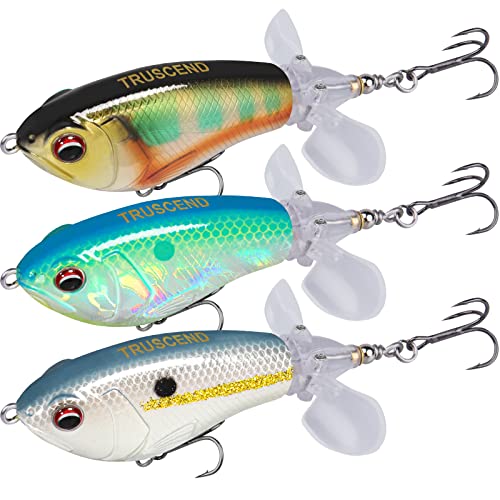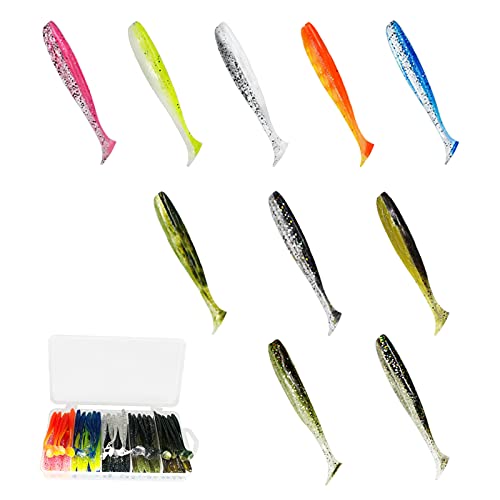Explore the different types of fishing lures for bass, tips on selecting the right one, techniques for success, and maintenance advice to keep your lures in top condition.
Types of Fishing Lures for Bass
Crankbaits
Crankbaits are a popular choice among bass anglers due to their versatility and effectiveness in attracting fish. These lures feature a diving lip that allows them to dive down into the water, mimicking the movement of prey fish. With their realistic colors and lifelike action, crankbaits are able to entice even the most finicky bass. Whether you’re fishing in shallow waters or deep reservoirs, crankbaits can be a reliable option to consider.
Jig and Pig
The jig and pig combination is a tried and true method for targeting bass in various conditions. This setup consists of a lead head jig paired with a pork or plastic trailer. The jig’s weight allows it to sink quickly, making it ideal for fishing in deeper waters or areas with heavy cover. By adjusting the trailer and jig weight, anglers can customize their presentation to match the mood of the bass. Whether you’re flipping into dense vegetation or dragging along rocky bottoms, the jig and pig can be a go-to lure for bass fishing.
Spinnerbaits
Spinnerbaits are another favorite among bass anglers for their ability to cover water quickly and attract aggressive strikes. These lures feature a spinning blade that creates flash and vibration in the water, mimicking injured baitfish. With their weedless design, spinnerbaits are perfect for fishing in areas with heavy vegetation or structure. By varying your retrieve speed and depth, you can effectively target bass in different water conditions. Whether you’re fishing in murky ponds or clear lakes, spinnerbaits can be a reliable choice for enticing bass to bite.
Soft Plastic Swimbaits
Soft plastic swimbaits have gained popularity in recent years for their lifelike appearance and natural swimming action. These lures are typically molded to resemble various baitfish species, making them a convincing meal for hungry bass. With their soft bodies and realistic colors, swimbaits can be a versatile option for targeting bass in a variety of situations. Whether you’re fishing in open water or along rocky shorelines, soft plastic swimbaits can be a go-to lure for enticing bass to strike.
Choosing the Right Fishing Lure
Matching the Lure to the Water Conditions
When it comes to choosing the right fishing lure for bass, one of the key factors to consider is the water conditions. Different types of lures are more effective in certain water conditions than others. For example, in clear water, you may want to use a more natural-looking lure that mimics the baitfish in the area. On the other hand, in murky or muddy water, a brightly colored lure that creates more vibration may be more effective in attracting bass. By matching the lure to the water conditions, you can increase your chances of success on the water.
Considering the Time of Year
Another important aspect to consider when selecting a fishing lure is the time of year. Bass behavior changes throughout the seasons, and your choice of lure should reflect these changes. For example, in the spring when bass are spawning, you may want to use a soft plastic swimbait to mimic the behavior of baitfish in the area. In the summer, when bass are more active and feeding aggressively, a crankbait or spinnerbait may be more effective in enticing strikes. By considering the time of year, you can tailor your lure selection to match the current behavior of the bass.
Understanding Bass Behavior
Understanding the behavior of bass is crucial when choosing the right fishing lure. Bass are predatory fish that are constantly on the lookout for their next meal. By understanding their feeding habits, you can select a lure that will trigger a strike. For example, bass are known to be ambush predators that hide in cover and wait for prey to come within striking distance. In these situations, a jig and pig lure that can be pitched into tight spaces may be more effective. By understanding bass behavior, you can choose a lure that plays into their natural instincts and increases your chances of success.
Testing Different Lures
One of the best ways to determine the right fishing lure for bass is to test out different options. Every body of water is different, and what works in one location may not be as effective in another. By experimenting with a variety of lures, you can determine which ones are most successful in enticing strikes from bass. Keep a log of your results and pay attention to patterns that emerge. Over time, you will develop a better understanding of which lures work best in different situations, allowing you to make more informed choices when out on the water.
Techniques for Using Fishing Lures
Topwater Fishing
Topwater fishing is an exciting technique that involves using lures that float on the surface of the water. This method can be highly effective in enticing bass to strike, as the movement of the lure creates a commotion that mimics natural prey. When engaging in topwater fishing, it’s essential to choose lures such as poppers, frogs, or buzzbaits that are designed to attract bass to the surface. By creating a disturbance on top of the water, these lures can provoke aggressive strikes from bass lurking below.
Pitching and Flipping
Pitching and flipping are precision casting techniques that allow anglers to target specific areas where bass are likely to be hiding, such as under docks, around vegetation, or near structure. By accurately placing the lure in these tight spaces, anglers can increase their chances of enticing a strike from a wary bass. When pitching, the angler swings the lure towards the target with a sidearm motion, while flipping involves dropping the lure straight down into the target area. Both techniques require practice and finesse to master, but they can be incredibly effective in catching bass in hard-to-reach spots.
Jerkbait Retrieval
Jerkbait retrieval is a technique that involves using a lure that mimics the erratic movements of injured baitfish. By jerking the rod tip to make the lure dart and dive through the water, anglers can create a lifelike action that can trigger a reaction strike from bass. Jerkbaits are versatile lures that can be used in various water conditions and depths, making them a popular choice for anglers looking to cover a lot of water and entice bass to bite.
Drop Shotting
Drop shotting is a finesse technique that involves suspending a small, lightweight lure off the bottom of the lake or river using a special rig. This method allows anglers to present the lure at a specific depth where bass are feeding without dragging it along the bottom. By gently shaking the rod tip to impart subtle movement to the lure, anglers can entice bass to strike without spooking them. Drop shotting is a highly effective technique for targeting finicky bass in clear water or when the fish are holding in deeper areas where traditional lures may not reach.
Maintenance and Storage Tips for Fishing Lures
Cleaning After Use
After a long day out on the water, it’s important to properly clean your fishing lures to ensure they stay in top condition for your next fishing trip. Start by rinsing off any dirt, debris, or saltwater from the lures with fresh water. Use a gentle soap and water solution to remove any stubborn residue, being careful not to damage any delicate components.
To prevent rust and corrosion, make sure to thoroughly dry your lures before storing them. You can use a soft cloth to gently pat them dry or let them air dry in a well-ventilated area. Inspect the lures closely for any remaining dirt or damage, and consider using a toothbrush to scrub away any stubborn grime.
Proper Storage Practices
Proper storage is key to maintaining the longevity of your fishing lures. Store them in a cool, dry place away from direct sunlight and extreme temperatures. Consider investing in a tackle box or organizer to keep your lures organized and protected.
To prevent tangling and damage, store each lure separately or use dividers to keep them separated. Avoid overcrowding your storage container, as this can lead to hooks getting tangled and lures getting damaged. Additionally, make sure to store your lures in a location where they won’t get crushed or bent.
Inspecting for Damage
Regularly inspecting your fishing lures for damage is essential to ensure they perform optimally on your next fishing excursion. Check for any signs of wear and tear, such as bent hooks, chipped paint, or cracked plastic. Replace any damaged components to prevent compromising the effectiveness of the lure.
Inspect the split rings and hooks for any signs of rust or corrosion, as this can impact their performance in the water. Consider using a rust inhibitor or lubricant to prevent rust from forming on metal components. By regularly inspecting and maintaining your fishing lures, you can prolong their lifespan and maximize their effectiveness on the water.
Replacing Hooks and Split Rings
Hooks and split rings are crucial components of fishing lures that can wear out over time with repeated use. It’s important to regularly inspect these components and replace them when necessary to ensure the lure functions properly. When replacing hooks, make sure to choose a size and style that matches the original specifications of the lure.
Using a pair of split ring pliers, carefully remove the old split rings and hooks and replace them with new ones. Make sure to securely attach the new components to prevent them from coming loose during use. By regularly replacing hooks and split rings, you can maintain the performance and effectiveness of your fishing lures for years to come.
In conclusion, proper maintenance and storage practices are essential for keeping your fishing lures in top condition. By following these tips, you can ensure that your lures perform optimally and last for many fishing adventures to come. Remember to clean your lures after each use, store them properly, inspect them for damage, and replace hooks and split rings as needed. With a little care and attention, your fishing lures will continue to attract the big bass and bring you success on the water.








